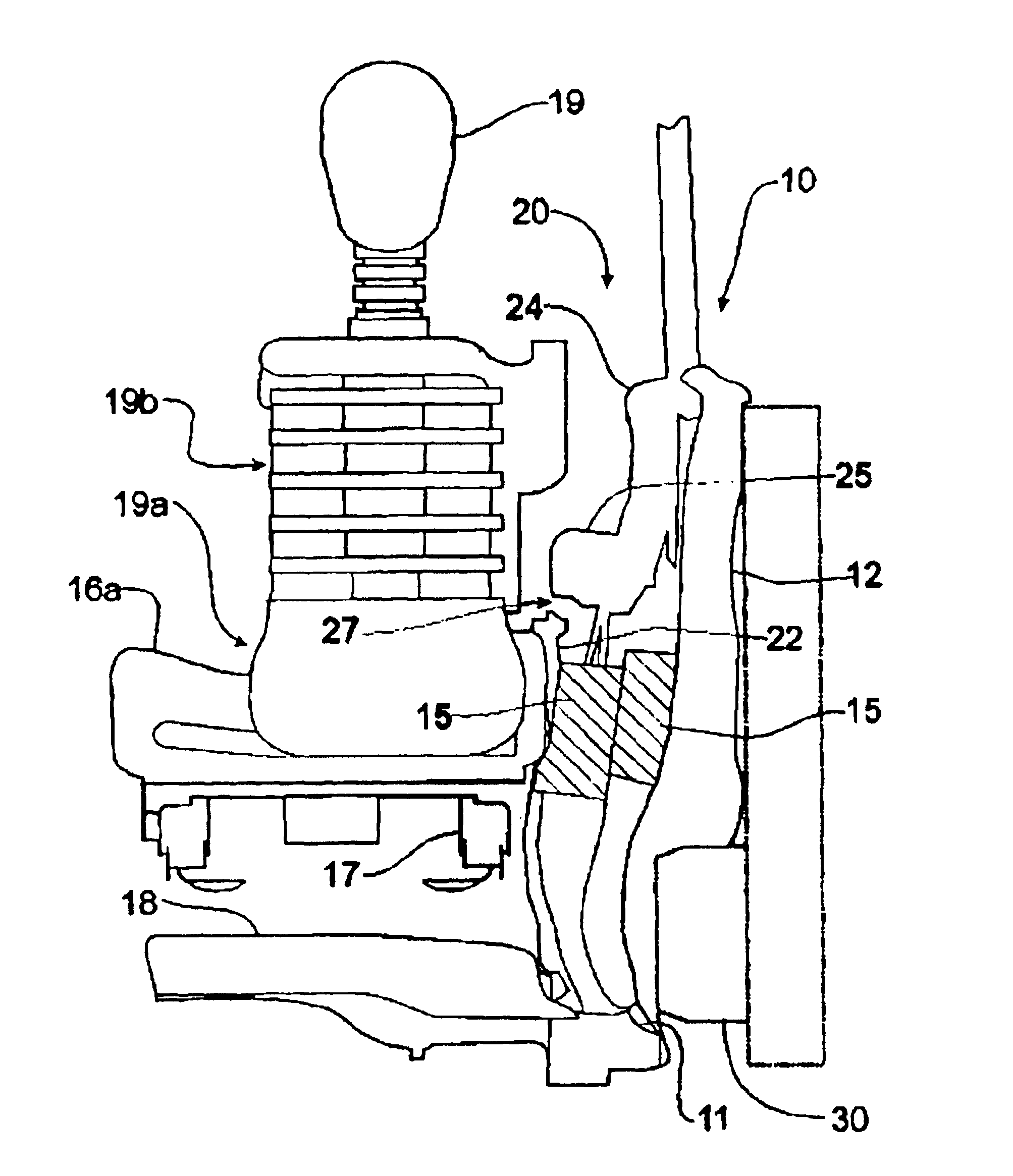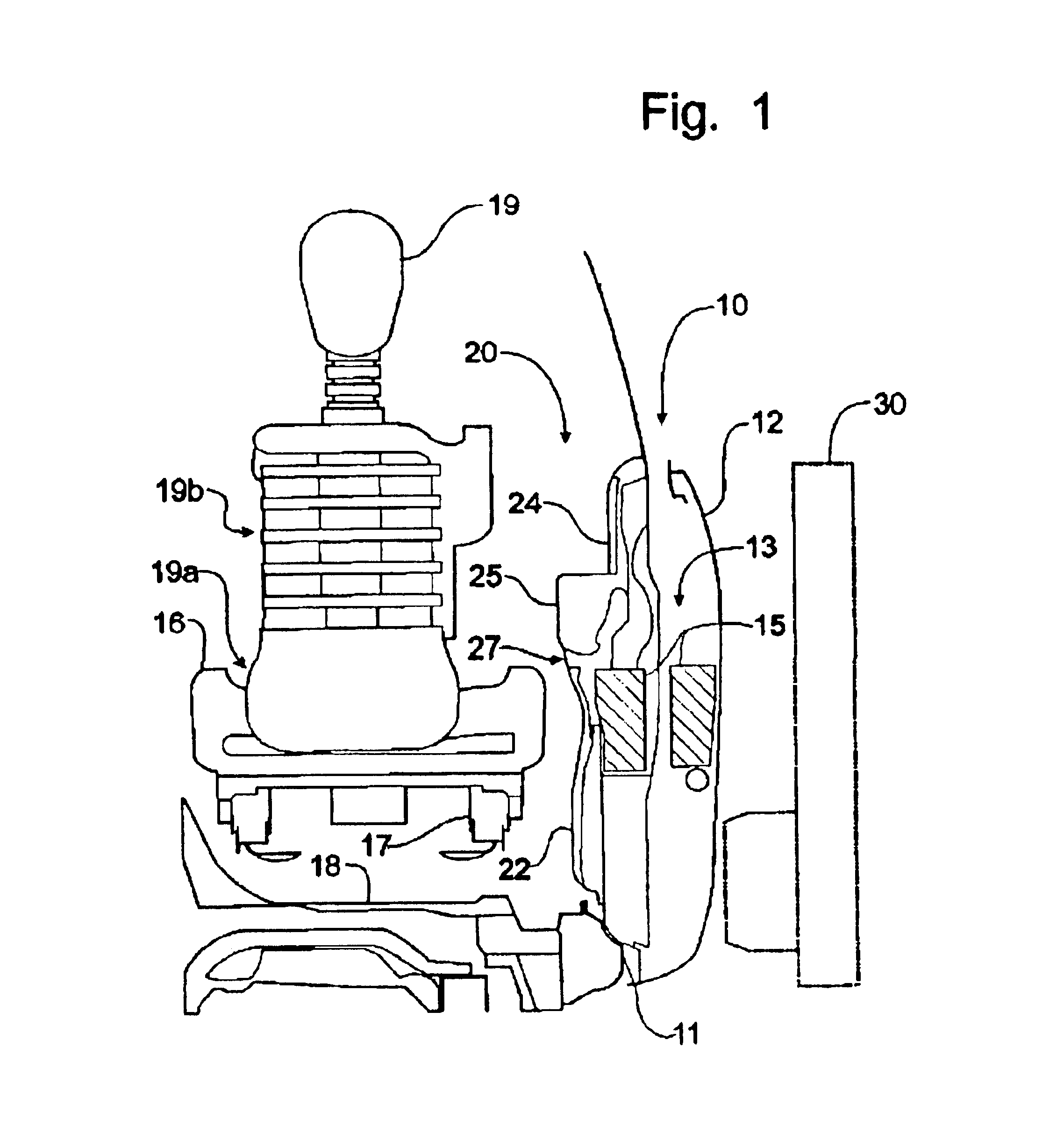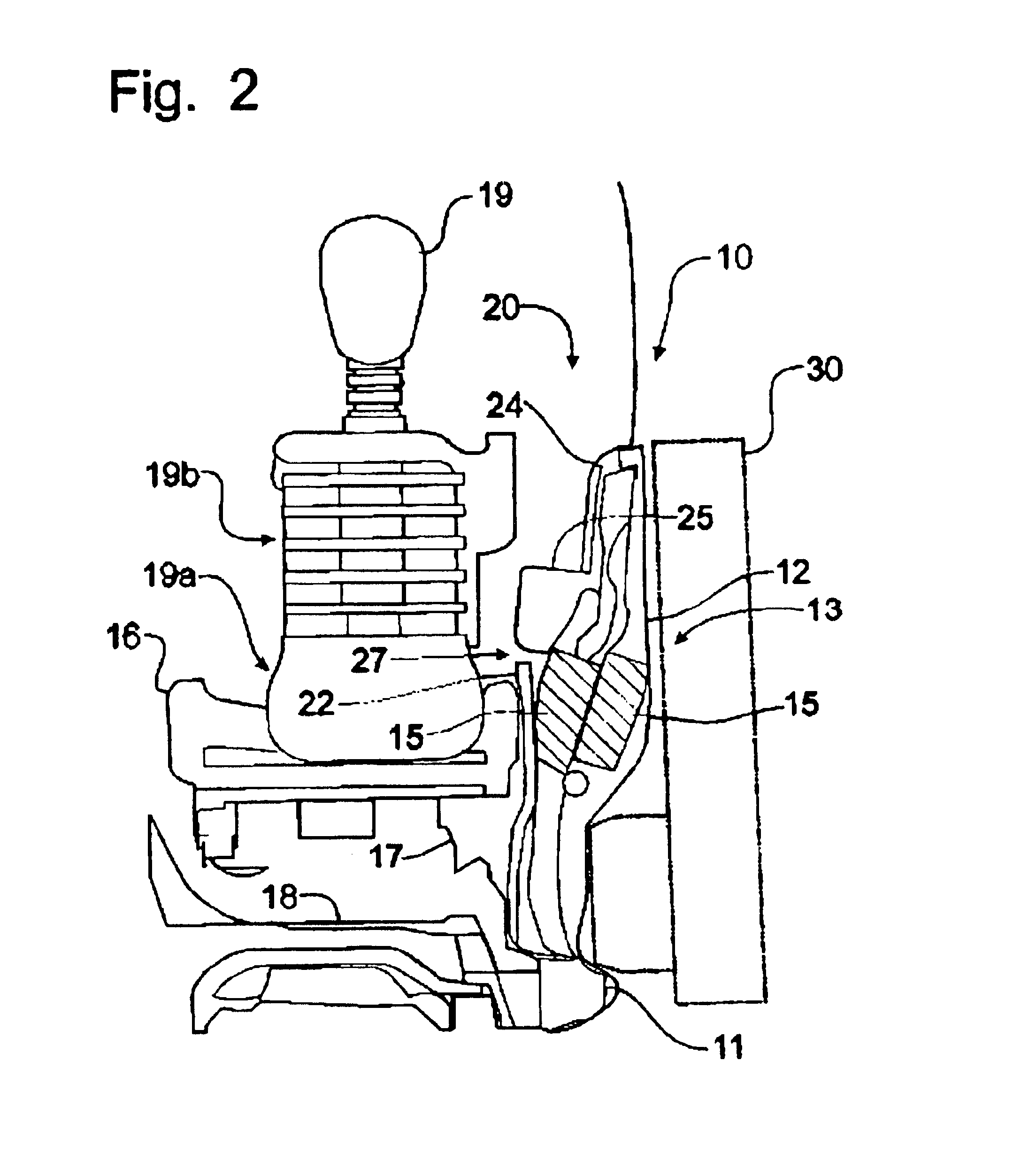Deployable trim for side impact system in automobiles
a technology of side impact system and side impact, which is applied in the direction of doors, roofs, pedestrian/occupant safety arrangements, etc., can solve the problems of limited effect of side impact testing, increased cost and weight, and insufficient strength of vehicles' sides to reduce barriers speed, so as to reduce rib deflection, improve side impact performance, and reduce the effect of rib deflection
- Summary
- Abstract
- Description
- Claims
- Application Information
AI Technical Summary
Benefits of technology
Problems solved by technology
Method used
Image
Examples
Embodiment Construction
[0031]Referring to FIGS. 13, an energy absorbing side door structure system for an automotive vehicle incorporating the principles of the instant invention to absorb side impact forces into the vehicle can best be seen. The door structure 10 includes an outer door panel 12 and conventional braces and an energy absorbing structure 13 internally of the door. On the interior side of the door 10, the door trim 20 provides a decorative appearance to the interior of the automobile. The interior door trim 20 includes a lower portion 22 and an upper portion 24 that includes an armrest 25 positioned at a conventional and convenient location for use thereof by the occupant, represented by the crash dummy 19. Adjacent the side door 10, the crash dummy 19 sits in the front seat 16, or the back seat 16a as represented in FIG. 3, which is supported on a seat frame 17 above the floor 18 of the vehicle which terminates at the door sill 11 engagable with the door 10 in a conventional manner.
[0032]In...
PUM
 Login to View More
Login to View More Abstract
Description
Claims
Application Information
 Login to View More
Login to View More - R&D
- Intellectual Property
- Life Sciences
- Materials
- Tech Scout
- Unparalleled Data Quality
- Higher Quality Content
- 60% Fewer Hallucinations
Browse by: Latest US Patents, China's latest patents, Technical Efficacy Thesaurus, Application Domain, Technology Topic, Popular Technical Reports.
© 2025 PatSnap. All rights reserved.Legal|Privacy policy|Modern Slavery Act Transparency Statement|Sitemap|About US| Contact US: help@patsnap.com



